
Consumers demand better
Creating a safer, more secure marketplace
Demanding better: Three examples
EXAMPLE 1. AUTO SAFETY: In 1965, 47,089 Americans died in auto crashes. As Ralph Nader wrote that year in his book, “Unsafe at any Speed,” “For over half a century the automobile has brought death, injury and the most inestimable sorrow and deprivation to millions of people.”
By 2015, the number of auto crash-related deaths in the U.S. had dropped to 35,485. More profoundly, the number of such deaths per 1 million miles traveled dropped from 5.3 to 1.15.
Consumers demanded safer cars. Lawmakers and, ultimately, the auto industry responded. The lives of hundreds of thousands of lives of Americans were saved.
A watchdog for consumers for 50 years.
***
EXAMPLE 2: TOY SAFETY: In the late 1960s and early 1970s, among the toys marketed for children, according to The New York Times, were “ovens for little girls that could reach flesh-searing temperatures, plastic dolls for toddlers with pinline protusions, [and] science kits with exposed electrical terminals that could give a child a fatal shock.”
It’s no wonder that Saturday Night Live parodied the problem in a sketch featuring the toys “Bag ‘O Glass” and “Johnny Switchblade Adventure Punk.”
By 2013, standards had changed. As a spokesperson for the toy industry acknowledged, “In this country, by law, toys are required to have been tested and certified before they are put on store shelves.”
Consumers demanded safer toys for their kids. Lawmakers and the industry responded. Lives were saved, injuries avoided, and the incalculable pain of losing a child averted.
***
EXAMPLE 3: FINANCIAL SECURITY: Before the Great Recession, seven different federal agencies held overlapping responsibilities for protecting consumers in the financial marketplace — and none had consumer protection as its primary mission.
That changed in 2010 with passage of the Dodd-Frank bill and the creation of the Consumer Financial Protection Bureau (CFPB). Consumers rushed to the CFPB’s online complaint portal, filing 79,200 complaints in the first year alone. And the Bureau resolved many of them, providing nearly $12 billion in relief to wronged consumers in its first six years on the job.
Consumers demanded a better watchdog in the wake of the financial crisis. Lawmakers responded and the industry adapted. Billions of dollars were saved.
Moving markets to play by the rules
The free enterprise system is stunningly effective at harnessing human creativity to satisfy human needs and desires. But in today’s world of abundance, we can afford rules that deliver greater safety, honesty and security to consumers.
Since our founding, PIRG has been privileged to serve as a force to hold companies accountable and help consumers demand better. Here are three chapters in that story.
Video credit: Oleh Ibrahimov via Shutterstock
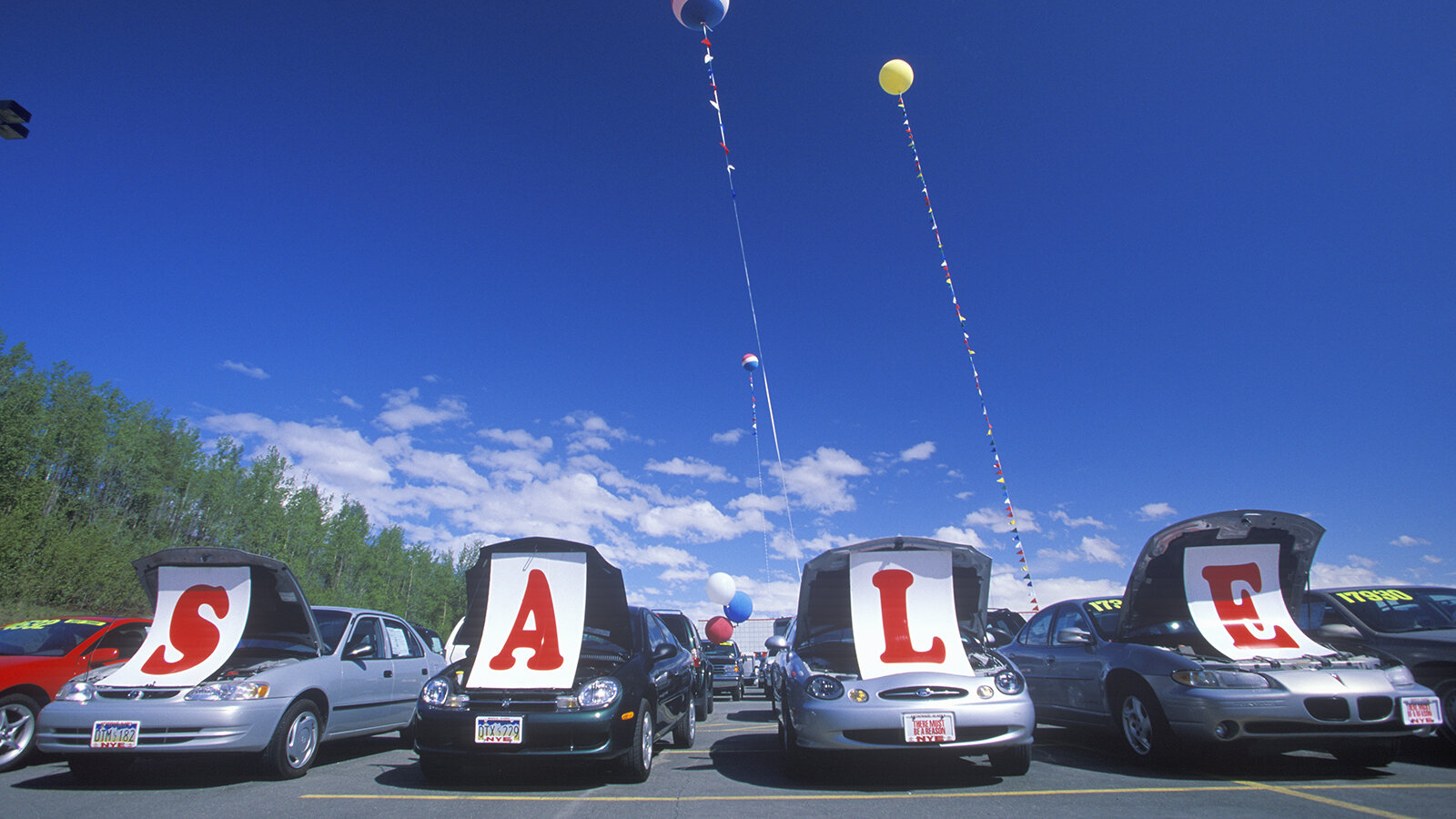
When your car dealer gives you a lemon ...
Defective cars used to be so commonplace they had a nickname: lemons.
A case in point: In 1980, Dan Brochu, a resident of New London, Connecticut, paid $6,500 for an Oldsmobile Omega. It was a classic new car lemon:
Water pooled inside, the electrical system failed, the paint peeled and the manual transmission slipped. The car was in the dealer's shop for repairs 135 days over an 18-month period.
To fix the problem, ConnPIRG’s Ed Mierzwinski lobbied for a bill, sponsored by Rep. John Woodcock, to create a legal definition of a new car lemon and [require automakers to replace defective cars or offer consumers refunds].
Ed reached out to consumers who had filed complaints about their cars, bringing together many of them — including Dan Brochu — for an April 13 media event calling for “Lemon-Aid.” Another lemon owner flew his Cessna over the state capitol, with a banner that read “My ‘82 Chevy is one reason Conn. needs a lemon law.”
The event spurred an outpouring of citizen letters to legislators that led to the June 4, 1982 passage of the nation’s first Lemon Law. Since then, the program (along with Lemon Law II, which in 1984 established a state-regulated arbitration program) has returned $60 million in refunds and car replacements to consumers.
Over the next decade, the Connecticut Lemon Law would be replicated in every state, many of them thanks to PIRG research and action.
Diesel-gate exposed, put to good use
When Volkswagen began marketing a fleet of “clean diesel” cars, it sounded too good to be true.
Diesel cars were known for their fuel efficiency, not their low emissions. Daring consumers to “learn the truth about clean diesel,” VW sold over half a million of the vehicles.
Unfortunately for VW, consumers eventually learned the truth.
A well-respected but low-profile group, led by Drew Kodjak, an alumnus of NJPIRG, was the first to discover in the U.S. that VW’s diesels weren’t clean at all. In fact, their emissions significantly exceeded federal standards.
Through what became known as a “defeat device,” VW had engineered the cars to fool emission tests — and to increase their toxic exhaust levels once they hit the road.
In response, PIRG launched the Make VW Pay campaign, organizing customers, dealerships and other advocates to call for the company to grant full rebates.
Among these customers were Marcus Moench and Elisabeth Caspari, who drove their Jetta SportWagen TDI in early 2016 from their Colorado home to VW’s Virginia headquarters to drop off a petition signed by 20,000 PIRG supporters.
In 2017, a federal judge ordered VW to pay a $2.8 billion criminal fine, with the funds targeted for environmental mitigation and spread across all 50 states as well as the District of Columbia and Puerto Rico.
PIRG’s focus turned from making VW pay to putting VW’s fine to good use. Our advocates called on states to put the money into charging stations for electric vehicles, electrifying public transit, and electrifying school buses.
To inform the public and hold the states accountable, on May 23, 2019, PIRG released a Volkswagen Settlement State Scorecard, giving only 15 states a C or better.
Photo credit: Joseph Sohm via Shutterstock
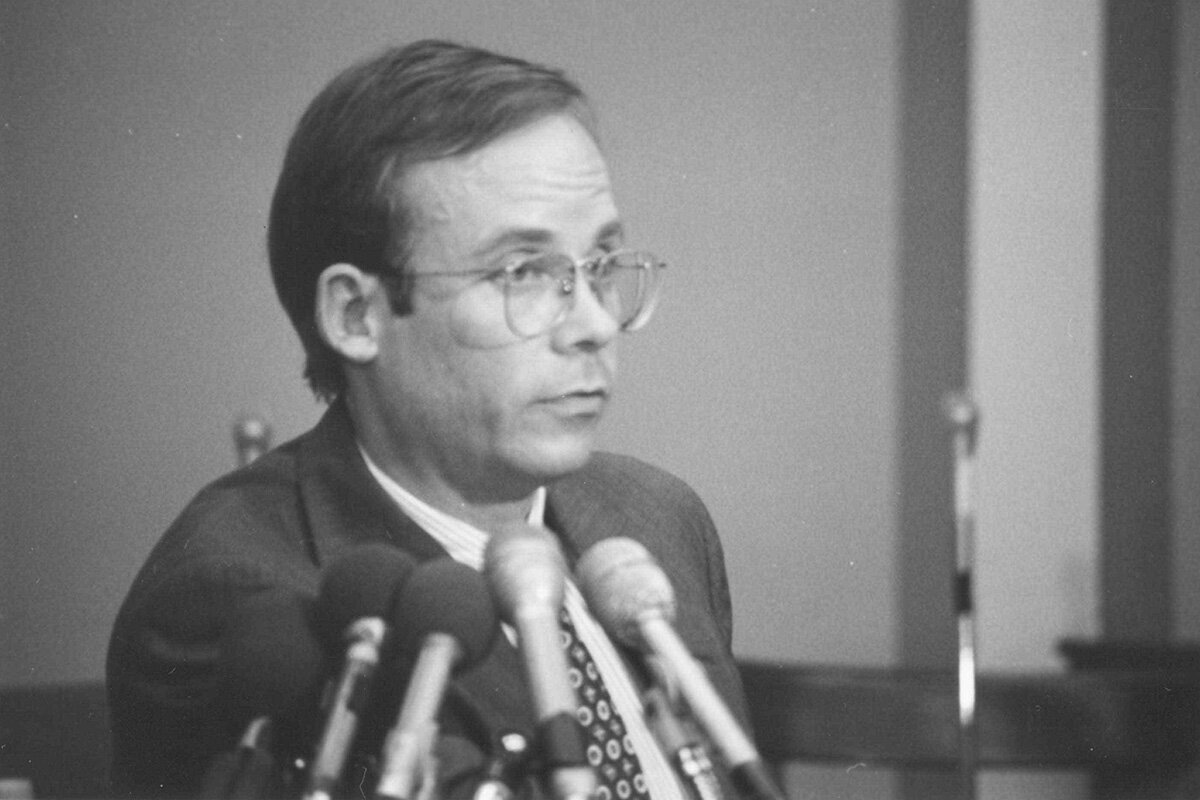
PIRG's Ed Mierzwinski has been working to protect consumers since the early 80s. Photo by staff.
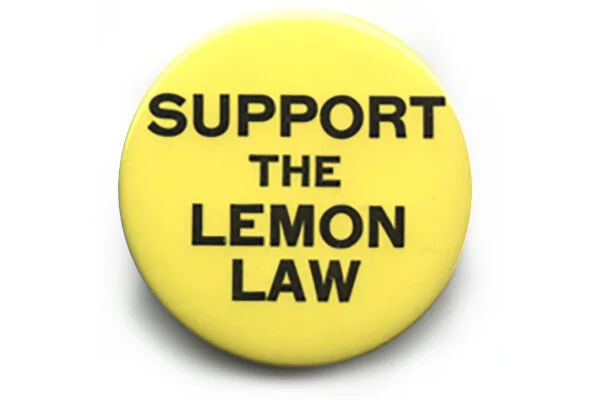

PIRG’s Mike Litt (left) joined Elisabeth Caspari and Marcus Moench, members of CoPIRG, to call on VW to take back its “clean” diesel vehicles. Photo by Kristopher Connor.

Taking on trouble in toyland
The Toy Association, a trade group representing the industry, had a harsh response in November 2018 for PIRG’s 33rd annual “Trouble in Toyland” report, stating:
“What PIRG doesn’t tell you … is that toys are among the safest consumer product categories found in the home. U.S. toy safety requirements are among the strictest in the world, with more than 100+ standards and tests in place...”
They were right. Toys today are safer.
But only because toy safety advocates and concerned parents demanded tougher standards.
Since 1987, U.S. PIRG Education Fund has published 36 reports raising awareness of potentially harmful toys, resulting in more than 150 recalls.
Bright yellow or orange labels on many toys have also helped inform parents. They read “Warning: Choking hazard. Small parts.” The labels were required by the 1994 Child Safety Protection Act, which passed after years of lobbying by PIRG and other consumer advocates and the 1992 adoption of a similar PIRG-backed law in Connecticut.
Better enforcement has also helped reduce toy-related deaths and injuries among children. In 2007-2008, PIRG led a coalition of consumer groups, mothers and parent-teacher associations to lobby in support of the Consumer Product Safety Improvement Act (CPSIA).
PIRG’s Ed Mierzwinski (the former ConnPIRG staffer and now the dean of consumer advocates in Washington, D.C.) testified before Congress in support of the bill. Thousands of PIRG activists pitched in to purchase an ad in USA Today. In the week leading up to the vote, at least 7,000 PIRG supporters sent emails, signed petitions and made phone calls.
On August 14, 2008, the CPSIA became law, making safety standards and testing mandatory, reducing allowable limits for toxic substances and empowering the CPSC to rush unsafe toy recalls.
You can’t make this stuff up: Asbestos for kids
In March 2018, PIRG-commissioned independent testing identified asbestos contamination in three Claire’s makeup products marketed for children.
After we notified Claire’s and the Food and Drug Administration (FDA), the company disputed the findings and refused to pull the products. PIRG President Faye Park warned parents through the media, including in an appearance on CBS News.
Months later, European government agencies also found asbestos and ordered Claire’s to cease selling the products. Still, Claire’s continued to sell the makeup in the United States.
In 2019, the U.S. Food and Drug Administration confirmed our findings. This time, Claire’s issued a recall.
A wake-up call on deadly infant sleepers
In May 2019, Adam Garber was alarmed to discover Fisher-Price Rock ‘n Play inclined sleepers at his infant son’s day care.
Adam knew that the sleepers, along with the Kids II Rocking Sleeper, had been recalled in April after causing the deaths of 36 infants. But Adam knew only because he was PIRG’s Consumer Watchdog. What about other parents and other day care centers?
Adam’s child’s day care immediately stopped using the sleepers. Meanwhile, Adam alerted the public of the news and began a survey of child care facilities to learn how prevalent the problem was.
Of the 376 facilities surveyed by PIRG staff, 1 in 10 were still using recalled sleepers. The report recommended that the U.S. Consumer Product Safety Commission improve product recall systems and encourage states to ban the use of recalled products in child care settings.
Photo credit: Fizkes via Shutterstock

PIRG has released an annual Trouble in Toyland report since 1986. NJPIRG's Patricia Kelmar and Rob Stuart release the report in the late 1980s (left), and Illinois PIRG's Abe Scarr releases the report in 2017. Photos by staff (left) and Supreet Muppa (right).

U.S. PIRG President Faye Park spoke with CBS News in 2018 following the release of our report which found asbestos in three different children’s makeup products sold by Claire’s. Image: CBS

In 2019, PIRG Consumer Watchdog Adam Garber spoke on NBC News about why inclined infant sleepers are so dangerous. Image: NBC News

In the wake of the crash, reform
It was late 2008. Reckless practices on Wall Street, neglected by the government, had brought the economy to its knees.
PIRG’s Ed Mierzwinski and Gary Kalman seized the moment, uniting consumer advocates, labor groups and others around the goal of protecting consumers from the too-often careless or unscrupulous practices of banks, credit card companies, debt collectors and other financial players. The new coalition, Americans for Financial Reform, was headed by PIRG alumna Heather Booth.
“This is a David and Goliath fight,” said Heather, in The Los Angeles Times. “On the one side, you have the extraordinarily powerful financial industry and the Chamber of Commerce.... And on the other side, you have the people.”
Elizabeth Warren, then a Harvard professor appointed by President Barack Obama to head the Troubled Asset Relief Program Oversight Board, proposed a solution: the creation of an independent watchdog to check Wall Street.
Along with AARP and other allies, Ed and Gary met with Prof. Warren (whom later, of course, Massachusetts voters elected to the U.S. Senate), Rep. Barney Frank (Mass.) and Sen. Chris Dodd (Conn.) to help turn Warren’s brainchild into the Consumer Financial Protection Bureau.
In December 2009, Rep. Frank introduced the Wall Street Reform and Consumer Protection Act. As Heather Booth predicted, Goliath came out swinging: The financial industry would ultimately spend $500 million in opposition, or roughly 166 times the amount the bill’s supporters would scrape together.
Still, the bill’s prospects looked promising — until Scott Brown, a Wall Street reform skeptic, won a 2010 special election to fill the vacant seat of U.S. Sen. Ted Kennedy, who had passed away in August 2009.
To persuade Sen. Brown to become a “yes” vote, MASSPIRG launched a grassroots campaign. Ultimately, he agreed to support an amended version of the bill, opening the door to other Republican hold-outs.
President Obama signed the bill into law on July 21, 2010, and appointed Richard Cordray as the CFPB’s first director in January 2012.
Defending Wall Street’s consumer cop
By Jan. 1, 2017, the CFPB had provided nearly $12 billion to 29 million consumers in the form of compensation, reductions, canceled debt and other relief.
Just weeks later, however, the Trump administration launched an effort to weaken the CFPB.
That same year, PIRG canvassers organized tens of thousands of people to urge their senators to oppose the Financial CHOICE Act, which would have undermined the agency. PIRG advocates coordinated press conferences with local groups and elected officials, and Ed defended the bureau in the media and testified before Congress.
In 2018, President Donald Trump signed legislation rolling back some Wall Street Reform protections. But the CFPB was spared. As a New York Times columnist had predicted a year earlier, “The [bureau] seems too popular to simply shut down.”
Photo credit: Daniel Avram via Shutterstock

PIRG’s Gary Kalman (center) and John Krieger (back left) presented Sen. Debby Stabenow (left), Sen. Amy Klobuchar (second from right), Sen. Harry Reid (far right) and others with more than 125,000 petitions from PIRG members nationwide in support of the Dodd-Frank Wall Street Reform and Consumer Protection Act. Photo by staff.
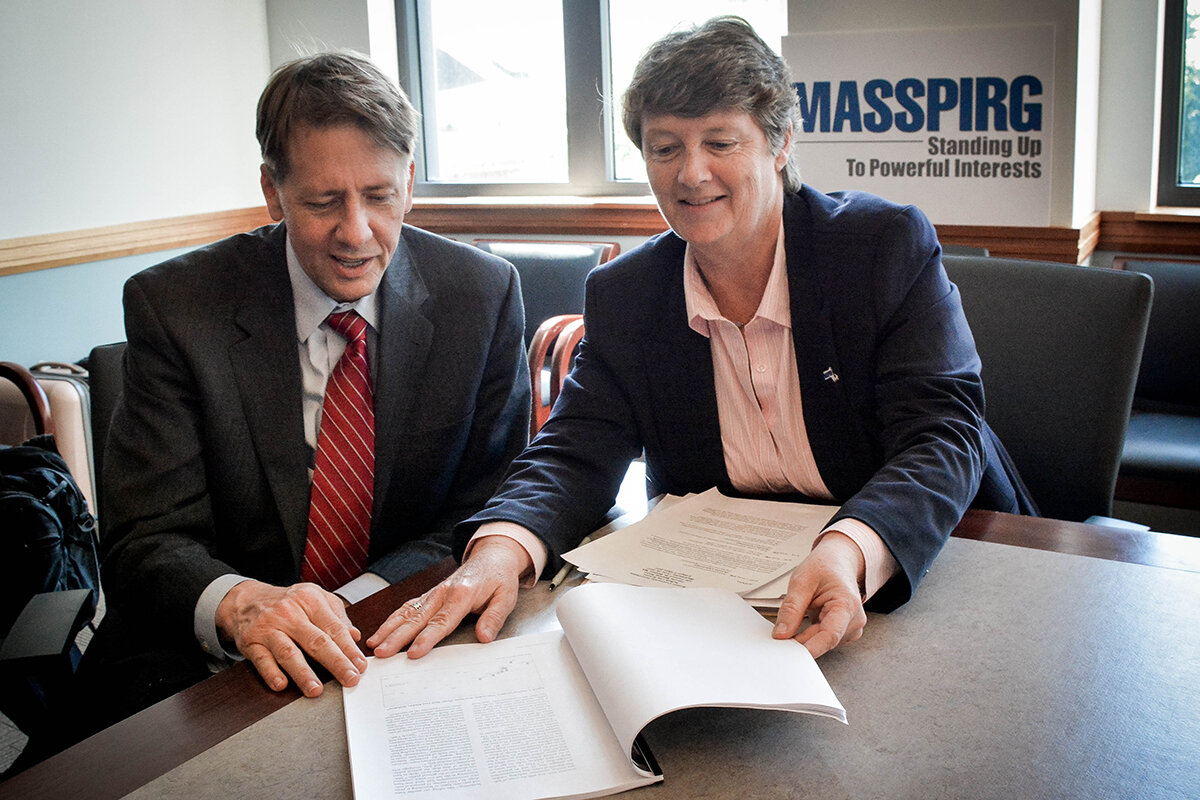
MASSPIRG's Deirdre Cummings met with CFPB Director Richard Cordray in June 2017. Photo by Caley McGuane.
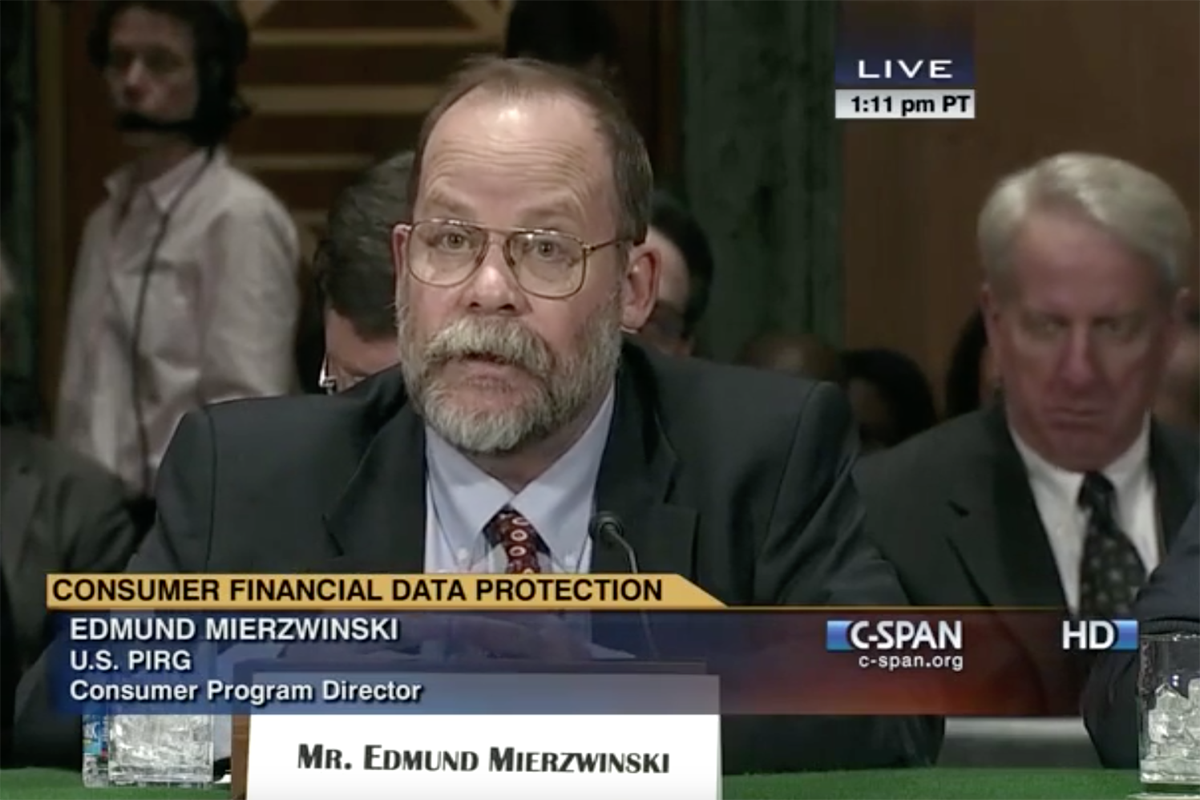
PIRG's Ed Mierzwinski testified before a Senate committee about consumer financial data protection in February 2014. Image from C-SPAN.





